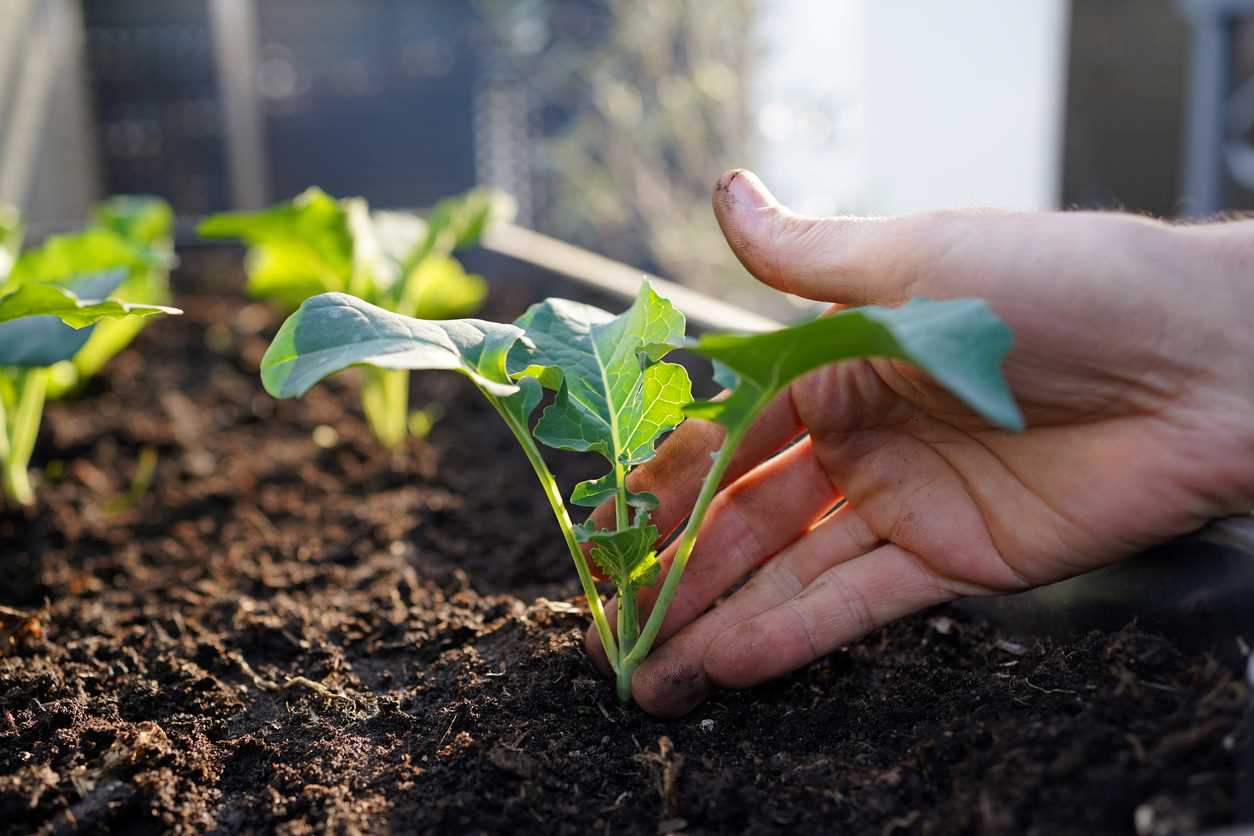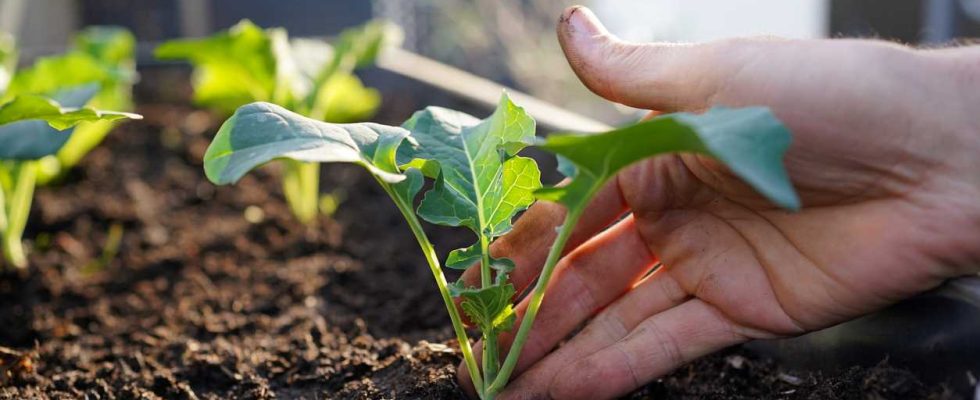
Turnip
From the Brassicaceae family, the turnip is a root vegetable which was a real staple food before being replaced by the potato, then it was used as a forage plant and is now back in the spotlight. It comes in various varieties which have differences:
- Their cultivation period: depending on its variety, turnip can be grown at different times of the year. For example, you can turn to spring or summer turnips, such as ‘Milan blanc’ or ‘Demi-long de Croissy’, or to autumn and winter varieties, such as ‘Jaune boule Golden’.
- Their flavor: Spring turnips have a finer taste, however, if you want a variety with a sweeter taste, you can opt for ‘Noir long de Pez’.
- Their form: Turnips are grown for their fleshy root which can be rounded, elongated or conical in shape.
- Their color: turnips can be white, yellow, pink, purple, etc.
Historical anecdote
The terms “turnip” and “rave” have for a long time been used to designate different vegetables indifferently. We thus found under these names both the turnip and the kohlrabi, the winter radish, the rutabaga. Due to this very old confusion, it is difficult to know precisely the origin of this vegetable.
The fact remains that it was then widely consumed by both men and animals. In the 19th century, the turnip enjoyed a golden age and was cultivated almost everywhere in France. However, with the primacy of potatoes and the presence of a great diversity of vegetables, even out of season, on the greengrocers’ stalls, turnips have been somewhat forgotten.
Turnip cultivation
Turnip identity and cultivation sheet
| Latin name | Brassica Rapa |
| Other name | Ship |
| Family | Brassicaceae |
| Exposure | Partial shade |
| Soil type | Rich and draining |
| Climate | Humid |
| Cold resistance | Resists up to -5°C |
| Planting period | From March to June and from July to August depending on the variety |
| Diseases and pests | Downy mildew, flies, flea beetles, snails, slugs |
Turnip Needs
Growing turnips is simple, but that doesn’t mean you have to make sure you meet their needs to succeed:
- Ground side: The turnip fears soils that are too dry and limestone. What it appreciates is a loose, light, rich and neutral to acidic soil. It is therefore advisable to prepare the soil by decompacting it and in the fall, before planting, to add compost.
- Temperature side: wait until all risk of frost has passed before sowing. The temperature necessary for germination is between 15 and 23°C.
- Exhibition side: be sure to place your turnips preferably in partial shade, but they will also tolerate a sunnier location.
- Watering side : Turnips like humidity. Watering must therefore be carried out on as regular a basis as possible.
- Crop rotation side: Since turnip cultivation is a crop that depletes the soil, it is recommended to wait 3 to 4 years before planting turnips again in the same growing area.
Companion plants
Turnip can be grown near mint, rosemary, dill, celery, carrots, beans, lettuces, tomatoes, peas and fennel. On the other hand, he doesn’t like the company of garlic.
Sowing
For turnips, there are two sowing periods: spring/summer turnips must be sown between March and June, as for the fall/winter turnipsthey must be sown between July and August.
If you garden with the moon, turnips should be sown during the waxing moon. For sowing directly in place, proceed as follows:
- Dig 1 furrow with a depth of approximately 1 cm. If you want to make several furrows, leave a space of at least 20 cm between them.
- Sow your seeds in each furrow, making sure to space the seeds apart from each other. Allow approximately 5 cm between them.
- Cover with a little soil and tamp lightly with the back of the rake.
- Water, then, afterwards, always keep the soil moist to encourage the seeds to emerge.
Turnips do not transplant. They cannot therefore be sown under cover.
Thinning
After 6 to 8 days, you will be able to see the seeds emerging. When the turnips have started to develop and they have 3 true leaves, you can proceed with thinning. This involves keeping one plant every 10 cm.
Interview
Maintaining a turnip crop is relatively simple. Here’s what you have to do:
- Remove weeds regularly.
- Water regularly throughout production as the turnip fears both drought and frost.
You can limit these tasks by installing mulch which will keep the soil cool and prevent the growth of weeds, while protecting your plants from frost.
Harvesting and conservation
The harvest time will depend on the variety you are growing. Generally the harvest is done 2 months after sowing for spring/summer varieties and 3 months later for fall/winter turnips.
Harvest before frost, as the turnip’s resistance to cold is limited.
Once you have harvested your turnips, know that you can consume everything, both the root and the top. If you don’t want to use them right away, you can store them for a few months in a cool, dark place, either in a silo or in a cellar. To do this, remove the foliage by cutting it just above the crown. If you can, place them in sand for better preservation.
Pests and diseases
Mildew
Turnips are susceptible to downy mildew. You can then see yellowing of leaves and fluffy white spots. In this case, quickly remove the plants showing these symptoms. If your turnips are subject to excessive humidity, you can protect them from mildew by spraying nettle manure or horsetail decoction.
The flea beetle
The flea beetle is an insect that can proliferate in periods of drought. One of the manifestations of its presence is the appearance of small perforations on the leaves in various places. The fight against this pest involves association with aromatic plants. You can, for example, grow fennel with turnips. You can also install an anti-insect veil.
The cabbage fly
It is a common pest of turnips. It acts by eating the roots and digging galleries which are an open door to rot. To prevent attacks from the cabbage maggot, a good solution is to alternate the rows of fennel and the rows of turnips. There too, installing an anti-insect net is an effective protection.
Slugs
When plants are still young, they can be victims of slugs, but there are many natural tricks, such as covering the soil with ashes, pine needles, broken eggshells, etc., to combat their presence .
The green caterpillar
The green caterpillar is also a pest of turnip crops. To combat their presence, place fern leaves at the base of your plants.

